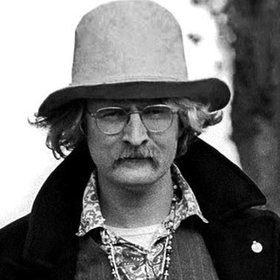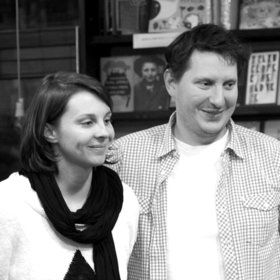In Watermelon Sugar
Richard Brautigan
iDEATH is a place where the sun shines a different colour every day and where people travel to the length of their dreams. Rejecting the violence and hate of the old gang at the Forgotten Works, they lead gentle lives in watermelon sugar. In this book, Richard Brautigan discovers and expresses the mood of a new generation.
In Watermelon Sugar is a novel written by Richard Brautigan and published in 1968. It is a tale of a commune organized around a central gathering house which is named "iDEATH". In this environment, many things are made of watermelon sugar (though the inhabitants also use pine wood and stone for building material and fuel is made from trout oil). The landscape of the novel is always changing. Each day has a different colored sun which creates different colored watermelons, and the central building also changes frequently.
Through the narrator's first person account we hear the story of the people and the events of iDEATH. The central tension is created by Margaret, once a lover of the narrator, and inBOIL, a rebellious man who has left iDEATH to live near a forbidden area called the Forgotten Works. It is a huge trash heap where the remnants of a former civilization lie abandoned in great piles. Margaret, a collector of such 'forgotten things', is friendly with inBOIL and his followers, who explore the place and make whiskey.
inBOIL's separation from the group may have been related to the annihilation of 'The Tigers', killed many years previously by the people. It is unknown to the reader whether 'The Tigers' were actual tigers, human beings or somehow anthropomorphic: while the tigers would kill and eat people (including the narrator's parents) they could also talk, sing, play musical instruments and were at least competent with arithmetic. Two tigers were killed on a bridge (known later as 'the abandoned bridge'). The last tiger was killed on a spot later developed into a trout farm.
In the violent climax of the novel, inBOIL returns to the community along with a handful of followers, planning, he says, to show the residents what iDEATH really is. The residents know only that "something" is about to happen—for all they know, inBOIL could be plotting to kill them all. Margaret appears oblivious to the threats, and unconcerned about the safety of her own family and friends. Many suspect that Margaret knew and did not reveal details of inBOIL's real plan, thus "conspiring" with the evil men. She is semi-ostracized from iDEATH, and at the beginning of the novel the narrator reveals he had ended their relationship because of these events.



